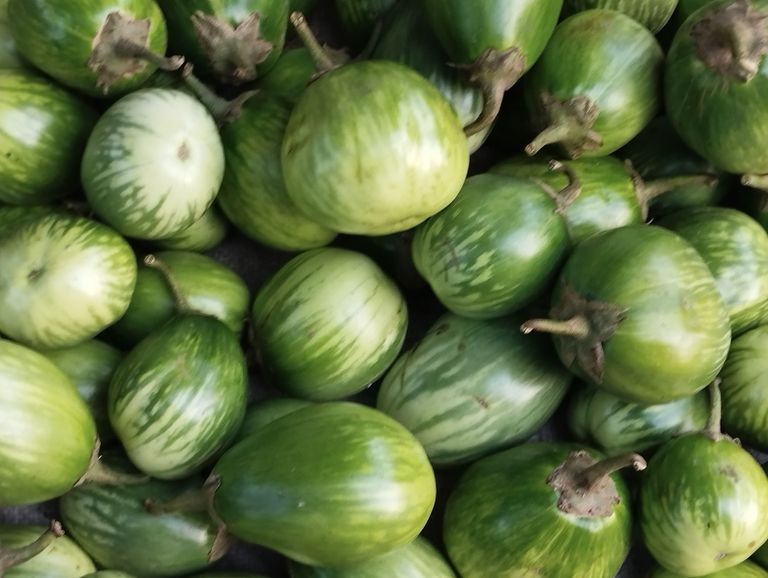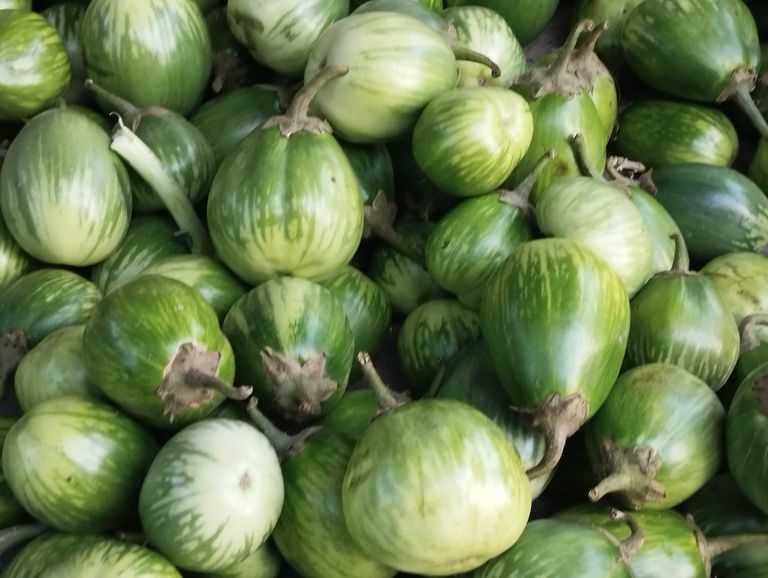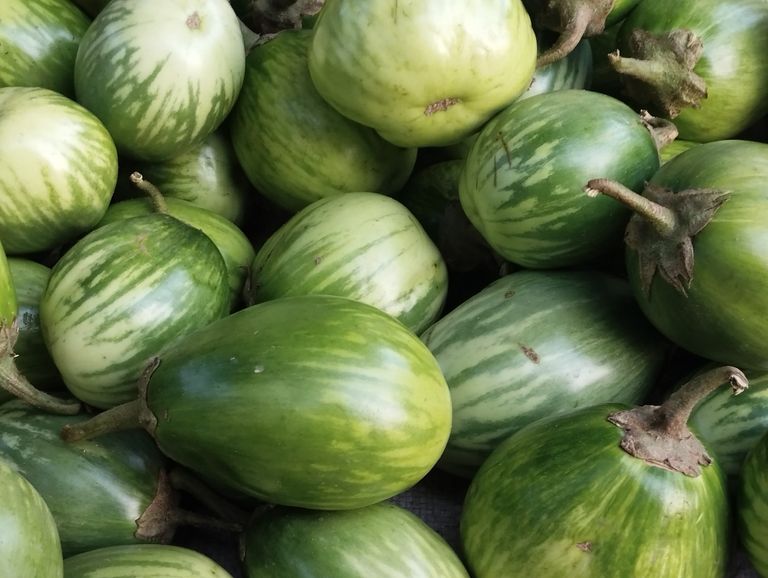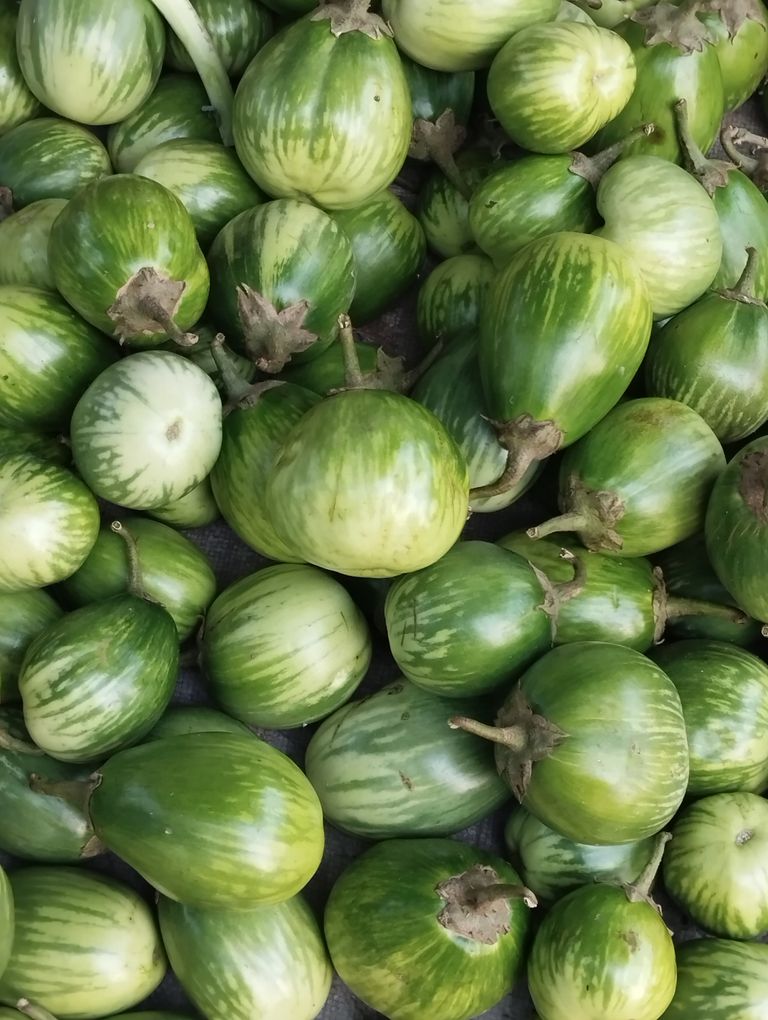
Marketing Strategies for Eggplants A Comprehensive Guide.
Eggplants, also known as brinjals, are a staple in many cuisines worldwide. With their versatility and health benefits, eggplants have a significant demand in both local and international markets. Proper marketing strategies can enhance their reach, ensure higher profitability, and reduce wastage. Here’s a detailed guide on eggplant marketing.
- Understanding the Market Demand
Eggplants are used in a variety of dishes, from stir-fries to stews and curries. Identifying target markets, including households, restaurants, and processing industries, is crucial. Popular eggplant varieties include:
Long Purple: Common in Asian cuisines.
Black Beauty: Preferred in Western dishes.
Thai Eggplant: Widely used in Southeast Asian curries.
- Quality Standards and Grading
To appeal to buyers, maintain strict quality standards. Grading should be based on:
Size and Shape: Uniformity is crucial for better market acceptance.
Color: Bright, glossy skins indicate freshness.
Firmness: A firm texture ensures a longer shelf life.
Proper washing, trimming, and packaging also play a vital role in maintaining quality.
- Packaging and Branding
Attractive packaging adds value to the product. Use eco-friendly materials and include essential details like:
Variety name.
Weight and grade.
Organic certification (if applicable).
Creating a brand identity with a catchy logo and tagline can help establish trust among customers.
- Market Channels
Eggplants can be marketed through several channels:
a) Local Markets
Sell directly to consumers or wholesalers at local vegetable markets. Ensure competitive pricing and consistent supply.
b) Retail Chains
Collaborate with supermarkets and grocery stores for bulk sales. Emphasize quality and reliability to secure long-term contracts.
c) Export Market
Exporting to countries with high demand for eggplants can yield better profits. Research export regulations and partner with reliable logistics companies.
d) Online Platforms
Leverage e-commerce platforms and social media to reach tech-savvy consumers. Offer doorstep delivery and special discounts to attract more buyers.
- Promotional Activities
Marketing efforts can boost visibility and sales. Here are some promotional strategies:
Social Media Campaigns: Share recipes, health benefits, and farming stories on platforms like Instagram and Facebook.
Farmer’s Markets: Participate in local events to directly connect with consumers.
Discount Offers: Offer introductory discounts to new customers.
Collaboration: Partner with chefs or influencers to promote eggplant-based dishes.
- Value Addition
Adding value to raw eggplants can diversify revenue streams. Some ideas include:
Pickles: Eggplant pickles are popular in many regions.
Frozen Products: Sliced or pre-cooked eggplants for convenience.
Processed Foods: Sauces, dips, or spreads made from eggplants.
- Seasonal Strategies
Eggplants are available year-round in many regions, but peak seasons often result in lower prices. Diversify marketing strategies during peak and off-peak seasons:
Peak Season: Focus on bulk sales and exports.
Off-Peak Season: Highlight premium pricing and freshness.
- Sustainability Practices
Sustainable farming and marketing practices are gaining importance. Use organic farming methods and minimize waste through recycling and composting. Highlight these efforts in your marketing campaigns to attract environmentally conscious consumers.
- Challenges in Eggplant Marketing
Perishability: Eggplants have a short shelf life. Efficient cold storage and transportation are essential.
Pest Issues: Proper pest control and packaging are needed to prevent losses.
Price Fluctuations: Stay updated on market trends and adjust pricing accordingly.
- Conclusion
Effective marketing of eggplants involves a combination of quality maintenance, branding, and targeted promotional activities. By understanding market demands and adopting innovative strategies, producers can maximize profitability and build a loyal customer base.

Bharta of Life: A Flavorful Blend of Experiences
Life is like a plate of bharta – a simple yet profound concoction of ingredients that come together to create something extraordinary. In Bengali culture, bharta is more than just food; it’s an emotion, a heritage, and a way of life. With its humble roots, it teaches us valuable lessons about simplicity, resilience, and embracing what we have. This blog delves into the metaphorical connection between life and bharta, exploring how our everyday experiences, like the ingredients in a bharta, contribute to a flavorful existence.
- The Base Ingredients: Essentials of Life
Every bharta starts with a base – often boiled potatoes, eggplant, or lentils. Similarly, life’s foundation lies in the basics: family, health, and education. These elements are like the boiled potatoes of our lives – plain but essential. Without a strong base, the other flavors have nothing to cling to.
In life, we often overlook these foundational aspects, taking them for granted. However, just as a bharta would fall apart without its base, our lives would lose their structure without these essentials.
- The Spice of Challenges: Adding Flavor
The real magic of bharta lies in the spices – mustard oil, green chilies, onions, and salt. Each spice represents the challenges and hardships that add flavor to our lives. A pinch of salt symbolizes the bittersweet moments, while the fiery green chili reflects the heat of struggles.
Without challenges, life would be bland. Overcoming obstacles, like balancing the spices in a bharta, gives us resilience and strength. Just as the perfect bharta requires a precise blend of spices, a meaningful life needs a balance of joy, pain, and perseverance.
- Mash It Together: The Art of Blending Experiences
Making bharta involves mashing everything together, ensuring that each ingredient contributes to the whole. Life, too, is about blending diverse experiences – happiness, sorrow, success, and failure.
Imagine a bharta where the mustard oil remains separate, or the chilies dominate the dish. It wouldn’t taste right. Similarly, in life, we must learn to integrate our experiences, finding harmony amidst chaos. Each moment, whether joyful or painful, plays its role in shaping who we are.
- The Mustard Oil of Memories
Mustard oil, with its distinctive aroma, is the soul of a good bharta. In life, memories act as this mustard oil – enriching our existence with their lingering essence. Childhood laughter, the warmth of loved ones, and milestones achieved all add a rich aroma to our lives.
Cherish your memories. They remind you of where you came from and inspire you to move forward. Just as mustard oil enhances the bharta, memories give our lives depth and character.
- Simplicity is Key: The Lesson of Humility
Bharta is not a fancy dish. It doesn’t boast expensive ingredients or complex cooking techniques. Yet, its simplicity is what makes it special. Life, too, is best lived simply. It’s not about extravagant luxuries but about finding joy in the little things – a heartfelt conversation, a peaceful evening, or the satisfaction of a day well spent.
- Serving Others: Sharing the Bharta
The true essence of bharta lies in sharing. It’s a dish that brings families together, symbolizing unity and love. In life, sharing our joys, resources, and even our burdens with others makes our journey more fulfilling.
When we share, we create connections, much like sharing a plate of bharta at the dinner table. This communal spirit enriches both the giver and the receiver, spreading warmth and happiness.
Conclusion: Savoring the Journey
Life, like a plate of bharta, is an intricate blend of simplicity, challenges, and shared moments. It reminds us to embrace imperfections, savor each experience, and remain humble. As we navigate our journey, let’s remember to add a little spice, stir in our memories, and always share the final dish with those around us.

Eggplant Farming: A Comprehensive Guide
Eggplant, also known as brinjal, is a versatile and widely cultivated vegetable. Its rich taste, nutritional benefits, and adaptability make it a favorite among farmers. Here’s a detailed guide on how to cultivate eggplants effectively.
Understanding Eggplant Cultivation
- Climate and Soil Requirements
Climate: Eggplants thrive in warm temperatures ranging between 25°C and 35°C. They are sensitive to frost and require a long growing season.
Soil: Eggplants grow best in well-drained, sandy loam or clay loam soil with a pH of 6.0 to 7.0. The soil should be rich in organic matter.
- Varieties of Eggplant
There are several varieties of eggplants, categorized by size, shape, and color. Popular varieties include:
Small and round: Suitable for short growing seasons.
Long and slender: Ideal for warmer climates.
Large and oval: Commonly used in commercial farming.
Preparation for Cultivation
- Land Preparation
Plow the field 3-4 times to achieve fine tilth.
Add well-rotted organic manure (20-25 tons per hectare) during the last plowing.
Ensure proper leveling of the field to avoid water stagnation.
- Seed Selection and Treatment
Use high-quality, disease-resistant seeds for better yield.
Soak the seeds in warm water (50°C) for 30 minutes to improve germination.
Treat seeds with fungicides like carbendazim (2 grams per kg of seed) to prevent fungal infections.
- Nursery Preparation
Prepare a nursery bed measuring 1 meter wide and 10 meters long.
Mix organic manure and soil in a 1:1 ratio.
Sow seeds 1-2 cm deep, keeping a spacing of 5 cm between rows.
Cover the bed with straw or plastic mulch to retain moisture.
Planting and Management
- Transplanting
Transplant seedlings 25-30 days after sowing when they have 4-5 true leaves.
Maintain a spacing of 60 cm between rows and 45 cm between plants.
Transplant during late afternoon or cloudy days to reduce transplant shock.
- Fertilizer Application
Apply a balanced dose of NPK fertilizers (Nitrogen: 100 kg/ha, Phosphorus: 50 kg/ha, Potassium: 50 kg/ha).
Use additional organic compost to enhance soil fertility.
- Irrigation
Eggplants require consistent moisture, but overwatering should be avoided.
Irrigate immediately after transplanting and then at regular intervals.
Crop Management
- Weed Control
Perform hand weeding or hoeing at regular intervals.
Mulching with organic material can suppress weed growth and retain soil moisture.
- Pest and Disease Management
Common pests:
Fruit borer: Use neem-based sprays or pheromone traps.
Aphids: Apply insecticides like imidacloprid.
Diseases:
Wilt: Treat soil with Trichoderma and practice crop rotation.
Leaf spot: Use copper-based fungicides for control.
Harvesting and Yield
Eggplants are ready for harvest 70-90 days after transplanting.
Harvest fruits when they are firm and shiny. Avoid over-ripened fruits.
Average yield: 30-40 tons per hectare under ideal conditions.
Post-Harvest Management
Clean the harvested eggplants to remove dirt.
Sort and grade fruits based on size and color.
Store at a temperature of 10-12°C to prolong freshness.
Package in ventilated crates to avoid physical damage during transport.
Economic Viability
Eggplant farming is highly profitable due to its high demand in local and international markets. Proper planning, pest management, and marketing strategies can significantly boost income.
Eggplant cultivation is a rewarding venture when managed effectively. By adhering to proper farming practices, farmers can achieve high yields and maximize profits. Whether for small-scale or commercial farming, eggplant remains a staple choice for sustainable agriculture.

Eggplant Farming: A Comprehensive Guide
Eggplant, also known as brinjal, is a versatile and widely cultivated vegetable. Its rich taste, nutritional benefits, and adaptability make it a favorite among farmers. Here’s a detailed guide on how to cultivate eggplants effectively.
Understanding Eggplant Cultivation
- Climate and Soil Requirements
Climate: Eggplants thrive in warm temperatures ranging between 25°C and 35°C. They are sensitive to frost and require a long growing season.
Soil: Eggplants grow best in well-drained, sandy loam or clay loam soil with a pH of 6.0 to 7.0. The soil should be rich in organic matter.
- Varieties of Eggplant
There are several varieties of eggplants, categorized by size, shape, and color. Popular varieties include:
Small and round: Suitable for short growing seasons.
Long and slender: Ideal for warmer climates.
Large and oval: Commonly used in commercial farming.
Preparation for Cultivation
- Land Preparation
Plow the field 3-4 times to achieve fine tilth.
Add well-rotted organic manure (20-25 tons per hectare) during the last plowing.
Ensure proper leveling of the field to avoid water stagnation.
- Seed Selection and Treatment
Use high-quality, disease-resistant seeds for better yield.
Soak the seeds in warm water (50°C) for 30 minutes to improve germination.
Treat seeds with fungicides like carbendazim (2 grams per kg of seed) to prevent fungal infections.
- Nursery Preparation
Prepare a nursery bed measuring 1 meter wide and 10 meters long.
Mix organic manure and soil in a 1:1 ratio.
Sow seeds 1-2 cm deep, keeping a spacing of 5 cm between rows.
Cover the bed with straw or plastic mulch to retain moisture.
Planting and Management
- Transplanting
Transplant seedlings 25-30 days after sowing when they have 4-5 true leaves.
Maintain a spacing of 60 cm between rows and 45 cm between plants.
Transplant during late afternoon or cloudy days to reduce transplant shock.
- Fertilizer Application
Apply a balanced dose of NPK fertilizers (Nitrogen: 100 kg/ha, Phosphorus: 50 kg/ha, Potassium: 50 kg/ha).
Use additional organic compost to enhance soil fertility.
- Irrigation
Eggplants require consistent moisture, but overwatering should be avoided.
Irrigate immediately after transplanting and then at regular intervals.
Crop Management
- Weed Control
Perform hand weeding or hoeing at regular intervals.
Mulching with organic material can suppress weed growth and retain soil moisture.
- Pest and Disease Management
Common pests:
Fruit borer: Use neem-based sprays or pheromone traps.
Aphids: Apply insecticides like imidacloprid.
Diseases:
Wilt: Treat soil with Trichoderma and practice crop rotation.
Leaf spot: Use copper-based fungicides for control.
Harvesting and Yield
Eggplants are ready for harvest 70-90 days after transplanting.
Harvest fruits when they are firm and shiny. Avoid over-ripened fruits.
Average yield: 30-40 tons per hectare under ideal conditions.
Post-Harvest Management
Clean the harvested eggplants to remove dirt.
Sort and grade fruits based on size and color.
Store at a temperature of 10-12°C to prolong freshness.
Package in ventilated crates to avoid physical damage during transport.
- The Base Ingredients: Essentials of Life
Every bharta starts with a base – often boiled potatoes, eggplant, or lentils. Similarly, life’s foundation lies in the basics: family, health, and education. These elements are like the boiled potatoes of our lives – plain but essential. Without a strong base, the other flavors have nothing to cling to.
In life, we often overlook these foundational aspects, taking them for granted. However, just as a bharta would fall apart without its base, our lives would lose their structure without these essentials.
- The Spice of Challenges: Adding Flavor
The real magic of bharta lies in the spices – mustard oil, green chilies, onions, and salt. Each spice represents the challenges and hardships that add flavor to our lives. A pinch of salt symbolizes the bittersweet moments, while the fiery green chili reflects the heat of struggles.
Without challenges, life would be bland. Overcoming obstacles, like balancing the spices in a bharta, gives us resilience and strength. Just as the perfect bharta requires a precise blend of spices, a meaningful life needs a balance of joy, pain, and perseverance.
- Mash It Together: The Art of Blending Experiences
Making bharta involves mashing everything together, ensuring that each ingredient contributes to the whole. Life, too, is about blending diverse experiences – happiness, sorrow, success, and failure.
Imagine a bharta where the mustard oil remains separate, or the chilies dominate the dish. It wouldn’t taste right. Similarly, in life, we must learn to integrate our experiences, finding harmony amidst chaos. Each moment, whether joyful or painful, plays its role in shaping who we are.